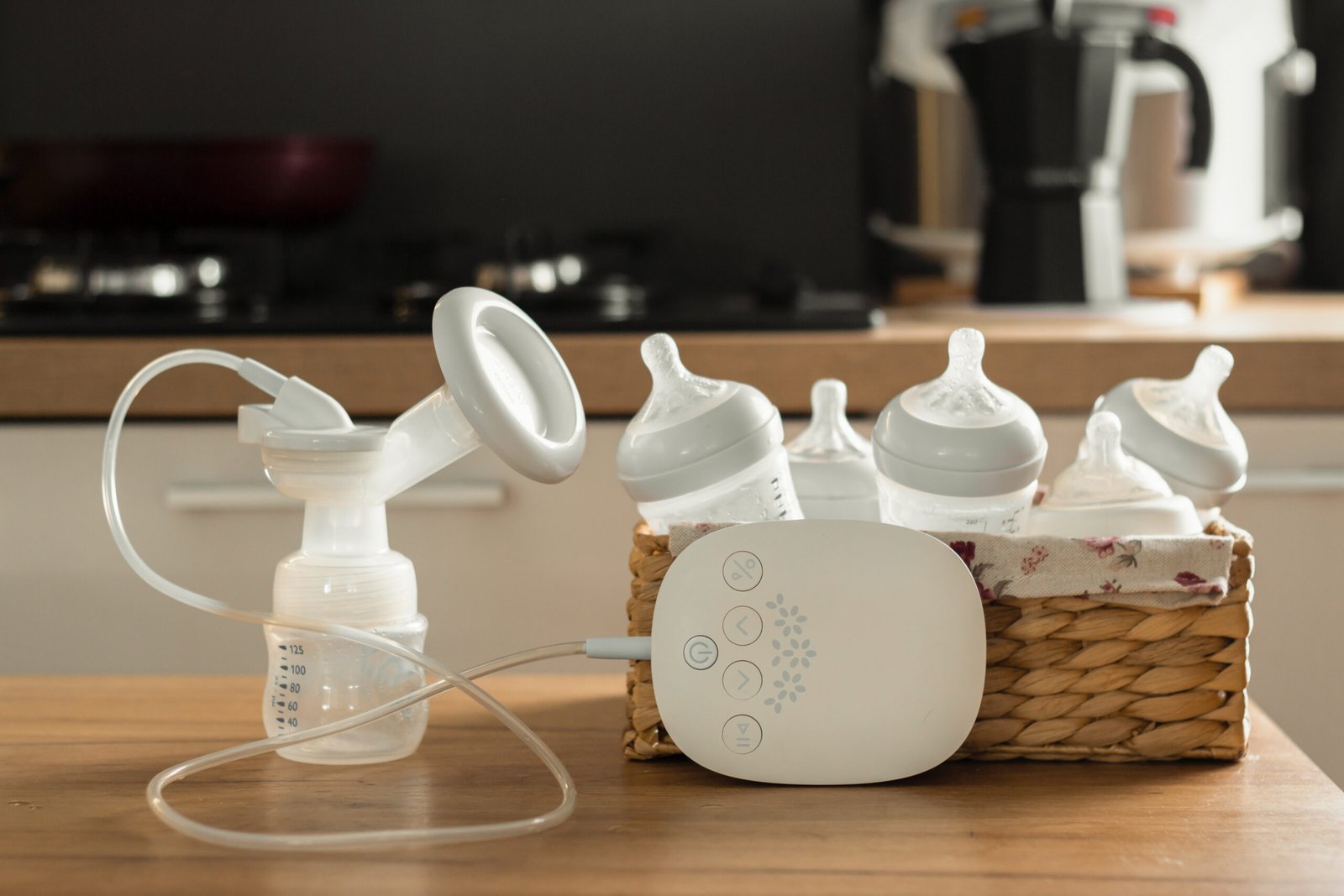Understanding Hypnobirthing
Hypnobirthing is a childbirth education method that uses self-hypnosis, guided imagery, deep relaxation, and specific breathing techniques to help women experience a more comfortable, calm, and often less painful labor and delivery. The philosophy behind hypnobirthing is that birth is a natural physiological process that can be experienced without fear and excessive pain when the mind and body are properly prepared and relaxed.

Young pregnant woman doing breathing exercises
Origins and Philosophy
The modern hypnobirthing movement was largely developed by Marie Mongan, who created the Mongan Method of HypnoBirthing in the 1980s. Her approach was influenced by the work of Dr. Grantly Dick-Read, who in the 1920s introduced the concept that fear and tension cause pain during childbirth‚Äîa phenomenon he called the “fear-tension-pain syndrome.”
The core philosophy of hypnobirthing includes:
1. Birth as a natural process: The belief that a woman’s body is designed to give birth efficiently and comfortably
2. The power of the mind-body connection: Understanding that mental state significantly impacts physical experience
3. Eliminating fear: Addressing and releasing fears about childbirth that may cause tension and pain
4. Language matters: Using positive language and terminology (e.g., “surges” instead of “contractions,” “sensations” instead of “pain”)
5. Partner involvement: Including the birth partner as an active participant in the process
Scientific Basis for Hypnobirthing
The Fear-Tension-Pain Cycle
The physiological basis for hypnobirthing stems from understanding how fear affects the birthing process:
1. Fear triggers stress hormones: When a woman feels afraid during labor, her body produces stress hormones like adrenaline and cortisol
2. Stress hormones restrict blood flow: These hormones direct blood away from non-essential functions (including the uterus) to the limbs for “fight or flight”
3. Reduced oxygen to the uterus: This causes the uterine muscles to work less efficiently and more painfully
4. Pain increases fear: The resulting pain reinforces fear, creating a cycle
Hypnobirthing aims to break this cycle by reducing fear, which decreases tension and subsequently reduces pain.
Research on Effectiveness
Scientific research on hypnobirthing shows mixed but promising results:
– A 2021 review of scientific literature noted that there are limited well-designed studies on self-hypnosis during labor, but the existing evidence suggests potential benefits
– Studies indicate that women using hypnobirthing techniques often report greater satisfaction with their birth experience
– Some research suggests reduced use of pain medication and interventions, though results vary
– More high-quality trials are needed to establish definitive conclusions about hypnobirthing’s effectiveness
Key Hypnobirthing Techniques
1. Self-Hypnosis
Self-hypnosis in the context of childbirth is not the theatrical hypnosis seen in entertainment. Rather, it’s a state of focused relaxation and heightened awareness where the mind becomes more receptive to positive suggestions.
How it works:
– Regular practice of entering a relaxed, focused state
– Using trigger words, music, or touch to quickly enter this state
– Creating and reinforcing positive beliefs about birth through suggestions
– Developing the ability to maintain this state during labor
Practice method:
– Daily sessions of 15-30 minutes
– Progressive relaxation followed by positive affirmations
– Visualization of a successful, comfortable birth
– Conditioning responses to specific cues
2. Specialized Breathing Techniques
Hypnobirthing employs specific breathing patterns designed to maximize relaxation and oxygen flow.
Surge (Contraction) Breathing:
– Slow, deep breathing in through the nose and out through the mouth
– Keeping the jaw relaxed and shoulders loose
– Focusing on sending oxygen to the uterus and baby
– Maintaining a steady rhythm regardless of contraction intensity
Birth Breathing (for the pushing phase):
– Gentle breathing down, allowing the body to guide the baby’s descent
– Avoiding forceful pushing or breath-holding
– Breathing the baby down rather than pushing
3. Guided Visualization
Visualization harnesses the power of the mind to influence physical sensations and responses.
Common visualizations include:
– Imagining the cervix opening like a flower blooming
– Visualizing waves washing over the body with each surge
– Picturing the baby moving down and out with each breath
– Creating a mental “safe place” to retreat to during intense moments
Practice approach:
– Regular guided sessions using recordings
– Creating personalized imagery that resonates
– Practicing linking visualizations to physical sensations
– Building the ability to maintain images during active labor
4. Deep Relaxation Techniques
Achieving profound physical relaxation is central to the hypnobirthing approach.
Methods include:
– Progressive muscle relaxation (systematically tensing and releasing muscle groups)
– Body scanning (mentally focusing on and relaxing each part of the body)
– Anchoring relaxation to specific cues (touch, words, or music)
– Light touch massage from the birth partner
5. Positive Affirmations
Affirmations are positive statements repeated regularly to reprogram subconscious beliefs about birth.
Examples of hypnobirthing affirmations:
– “My body knows how to birth my baby perfectly”
– “Each surge brings my baby closer to me”
– “I am calm, confident, and relaxed”
– “My body opens easily as my baby descends”
Implementation:
– Daily repetition, especially during relaxation practice
– Written affirmations placed around the home
– Recording and listening to personalized affirmations
– Partner verbalization during labor
Preparing for Hypnobirthing
Education and Classes
Most women who choose hypnobirthing take formal classes, which typically:
– Run for 5-6 sessions of 2-3 hours each
– Cost between $300-$500 for a complete course
– Include materials like books, relaxation recordings, and practice guides
– Involve both the birthing person and their birth partner
Popular hypnobirthing programs include:
– The Mongan Method (HypnoBirthing)
– Hypnobabies
– The Calm Birth Method
– Natal Hypnotherapy
Practice Requirements
Successful hypnobirthing requires significant commitment:
– Daily practice of techniques (typically 30 minutes or more)
– Beginning preparation by the second trimester
– Consistent reinforcement of positive messages about birth
– Partner involvement in practice sessions
– Creating a supportive environment free from negative birth stories
Creating a Birth Plan
A hypnobirthing birth plan typically includes:
– Preferences for a calm, quiet birthing environment
– Limited interventions unless medically necessary
– Freedom of movement during labor
– Minimal verbal communication during active labor
– Specific language preferences (e.g., “surge” instead of “contraction”)
– Delayed coached pushing in favor of breathing techniques
Hypnobirthing in Different Birth Settings
Hospital Birth
When using hypnobirthing in a hospital setting:
– Communicate birth preferences clearly with healthcare providers in advance
– Consider hiring a doula familiar with hypnobirthing
– Bring items to create a comfortable environment (music, battery-operated candles, etc.)
– Request minimal interruptions during contractions
– Discuss with providers how to maintain hypnobirthing practices during monitoring and procedures
Birth Center
Birth centers often provide an environment conducive to hypnobirthing:
– More homelike settings support relaxation
– Staff may be more familiar with alternative birthing approaches
– Fewer routine interventions align with hypnobirthing philosophy
– Water birth options complement hypnobirthing techniques
Home Birth
Home birth can be ideal for hypnobirthing as it provides:
– Complete control over the environment
– Familiar surroundings that promote relaxation
– No transition during labor that might interrupt the hypnotic state
– Freedom to use any position or technique without restriction
Benefits and Limitations
Potential Benefits
Research and anecdotal evidence suggest hypnobirthing may offer:
1. Reduced perception of pain: Many women report experiencing pressure or sensations rather than pain
2. Shorter labor: Some studies indicate reduced first-stage labor duration
3. Lower intervention rates: Potential reduction in epidural use, instrumental deliveries, and cesarean sections
4. Increased maternal satisfaction: Greater sense of control and positive birth experience
5. Reduced anxiety: Lower levels of fear and anxiety before and during birth
6. Partner involvement: Meaningful role for the birth partner
7. Useful life skills: Relaxation and self-hypnosis techniques beneficial beyond birth
Limitations and Considerations
Important factors to consider include:
1. Not guaranteed pain-free: While many women report reduced pain, hypnobirthing doesn’t guarantee a pain-free experience
2. Significant time commitment: Requires dedicated practice to be effective
3. Cost considerations: Classes can be expensive and are not always covered by insurance
4. May still need medical intervention: Birth complications can arise regardless of preparation
5. Individual variation: Effectiveness varies based on personal factors and circumstances
6. Limited scientific evidence: More research needed to fully validate claims
The Role of the Birth Partner
The birth partner plays a crucial role in hypnobirthing:
Before Birth
– Attending classes and learning techniques
– Practicing relaxation cues and prompts
– Creating a positive environment for practice
– Understanding the birth preferences and philosophy
During Labor
– Serving as the primary advocate and protector of the birth space
– Providing physical support through touch and massage
– Offering verbal prompts and relaxation cues
– Managing the environment (lighting, sound, temperature)
– Communicating with medical staff to maintain the hypnobirthing approach
Hypnobirthing and Medical Interventions
Compatibility with Medical Care
Hypnobirthing is not inherently opposed to medical care:
– Techniques can be used alongside medical interventions when necessary
– The focus is on maintaining calm and control regardless of birth circumstances
– Hypnobirthing can be beneficial even during cesarean births
Adapting to Changing Circumstances
If birth deviates from the planned natural approach:
– Hypnobirthing techniques can help maintain calm during decision-making
– Relaxation methods are valuable during medical procedures
– The focus shifts to accepting the new path while maintaining a positive mindset
– Partners can help reframe the experience in positive terms
Real-World Effectiveness
Success Rates
While individual experiences vary:
– Approximately 65-70% of women who use hypnobirthing report significant pain reduction
– About 25% report using no pain medication during labor
– Nearly all report feeling more in control and having a more positive experience
– Many still require some form of pain management or medical intervention
Factors Affecting Success
Elements that influence hypnobirthing effectiveness include:
– Consistency and quality of practice during pregnancy
– Previous birth experiences and trauma
– Support from healthcare providers
– Birth environment
– Unexpected complications
– Individual susceptibility to hypnotic suggestion
Getting Started with Hypnobirthing
Finding a Practitioner
To locate qualified hypnobirthing instructors:
– Ask your healthcare provider for recommendations
– Contact local birth centers or doula organizations
– Check certification with official hypnobirthing organizations
– Attend information sessions to find an instructor whose approach resonates with you
Self-Study Options
For those unable to attend classes:
– Books: “HypnoBirthing: The Mongan Method” or “Mindful Hypnobirthing”
– Online courses from certified organizations
– Audio programs and practice recordings
– Video tutorials and guided sessions
Questions to Ask When Considering Hypnobirthing
– What is the instructor’s training and experience?
– What is the success rate among their students?
– How many sessions are included and what is covered?
– What materials are provided?
– Is partner attendance included and encouraged?
– How does the approach handle unexpected situations?
– Are refresher courses available for subsequent pregnancies?
Sources
– Cleveland Clinic, “Hypnobirthing: Classes, Technique and Benefits,” September 2024
– HypnobirthApp, “Hypnobirthing: What Really Works in 2025,” February 2025
– BabyCenter, “Does hypnobirthing really work? Here’s everything to know about hypnobirthing,” January 2025
– Intermountain Health, “Hypnosis for Birth,” March 2025
– National Childbirth Trust (NCT), “Hypnobirthing: where to start,” March 2025
– Hypnobabies, “Hypnosis for Childbirth,” 2024
– Evidence Based Birth, “Hypnosis for Pain Relief during Labor,” 2023
– Science Direct, “Women’s experiences with hypnobirth ‚Äì A qualitative study,” 2023



